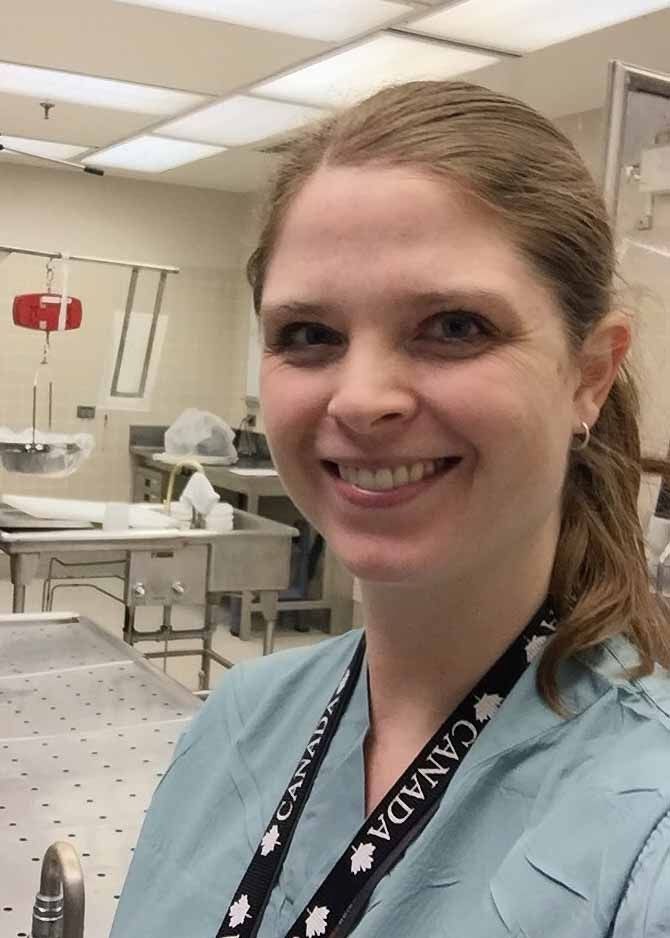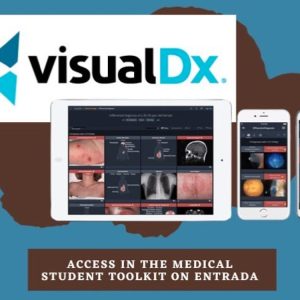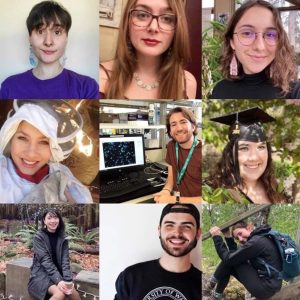Picture it: a dimly lit room, a mysteriously shadowed doctor, the absence of some critical PPE component and on the examination table, a corpse being autopsied in near darkness. In a matter of minutes, key forensic results are produced and the case is solved!
This is a common representation of pathology in the media and one that makes Diagnostic Services Manitoba (DSM) pathology resident Dr. Leslie Anderson cringe. Safety and quality violations aside, autopsy and forensics are only small parts of this medical specialty. These inaccuracies, along with perpetuated negative stereotypes, are misconceptions that Dr. Anderson would like to debunk.
“Pathology more than anything is a specialty where communication is key, as are analytical skills and problem solving,” said Dr. Anderson referring to TV’s characterization of pathologists as physicians who struggled with bedside manner. “Pathology is misunderstood by the public and doesn’t have as much regard from other medical specialties and this can be very disheartening.”
Dr. Anderson, in her fourth year of residency, is conducting a research study on the portrayal of pathology/pathologists in the media – a project made even more interesting by the fact that as an actor, she used to be part of this media. Her preliminary research supports her position that negative stereotypes, general inaccuracies and a focus on forensics and autopsy do not give the public an accurate understanding of the scope and function of this medical specialty and its critical impact on patient care.
“Even physicians don’t fully understand the role of pathology. They magically get results back so it’s frustrating when our role is not understood or appreciated.”
Medical students have very little time to explore different specialties before they have to identify their residency focus. As there are no required pathology rotations, students do not get the chance to experience pathology unless they seek out an elective of their own accord. When it comes time to choose a specialty most students are still unaware of pathology, the potential to study in this area or even what a career as a pathologist might look like. Not only does this decrease the likelihood of pursuing the specialty, it also contributes to a general lack of awareness of how pathology will interact with their future practice.
It’s definitely not the norm that Dr. Anderson applied to medical school with the full intent of becoming a pathologist. Ironically, it was television portrayals of pathology that initially wooed Dr. Anderson from her early career in acting. Further research confirmed that pathology fit the bill of a more meaningful future with the opportunity to make a difference and would also complement her interests in problem-solving.
“Pathology is visual, intellectually challenging and can affect pretty much every patient in the system, not a certain age group or demographic.”
Her passion for the discipline has only grown as she has begun reviewing cases and spending time focusing on her main area of interest, which does happen to be forensics.
“I like the big picture. I like being at the intersection of the justice system and medicine.”
At Dr. Anderson’s influence and orchestration, pathology was in the limelight as a feature in the Doctors Manitoba Doctors Care video series. She plans on presenting her pathology media research findings through many forums in an effort to further promote pathology and we can be certain that she will stay active and vocal as she moves through her career.
“I’m very passionate about educating people about what we do and every little bit helps.”



